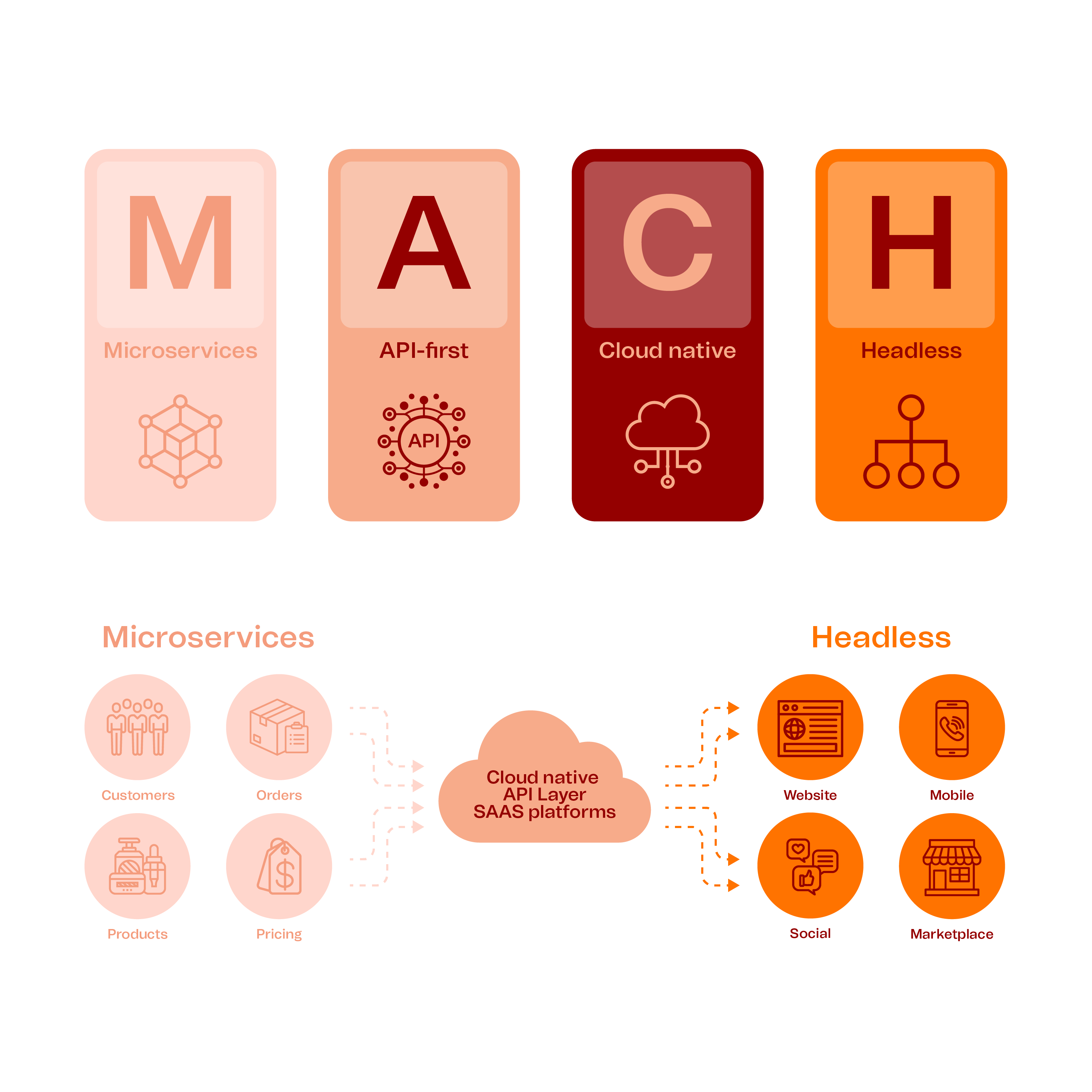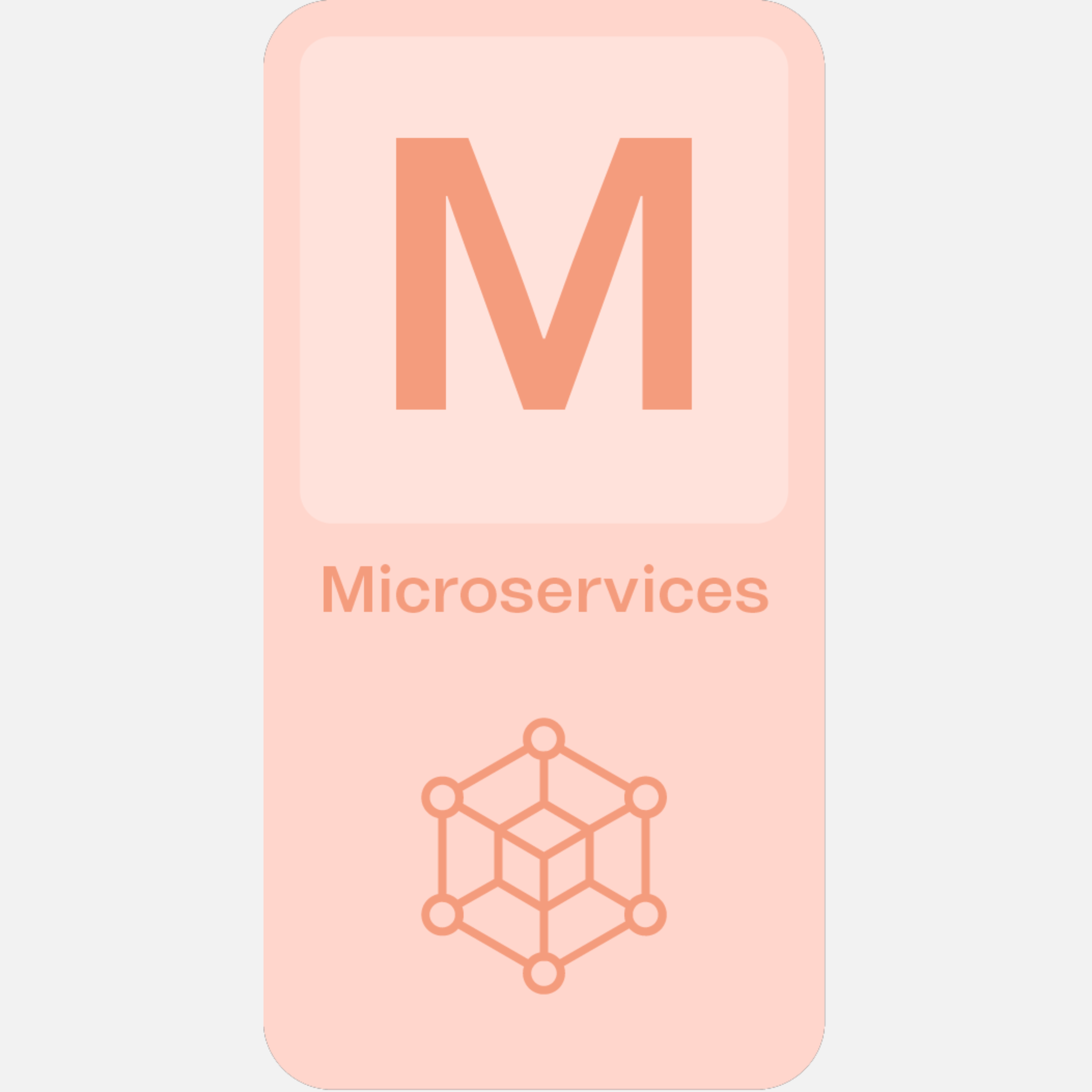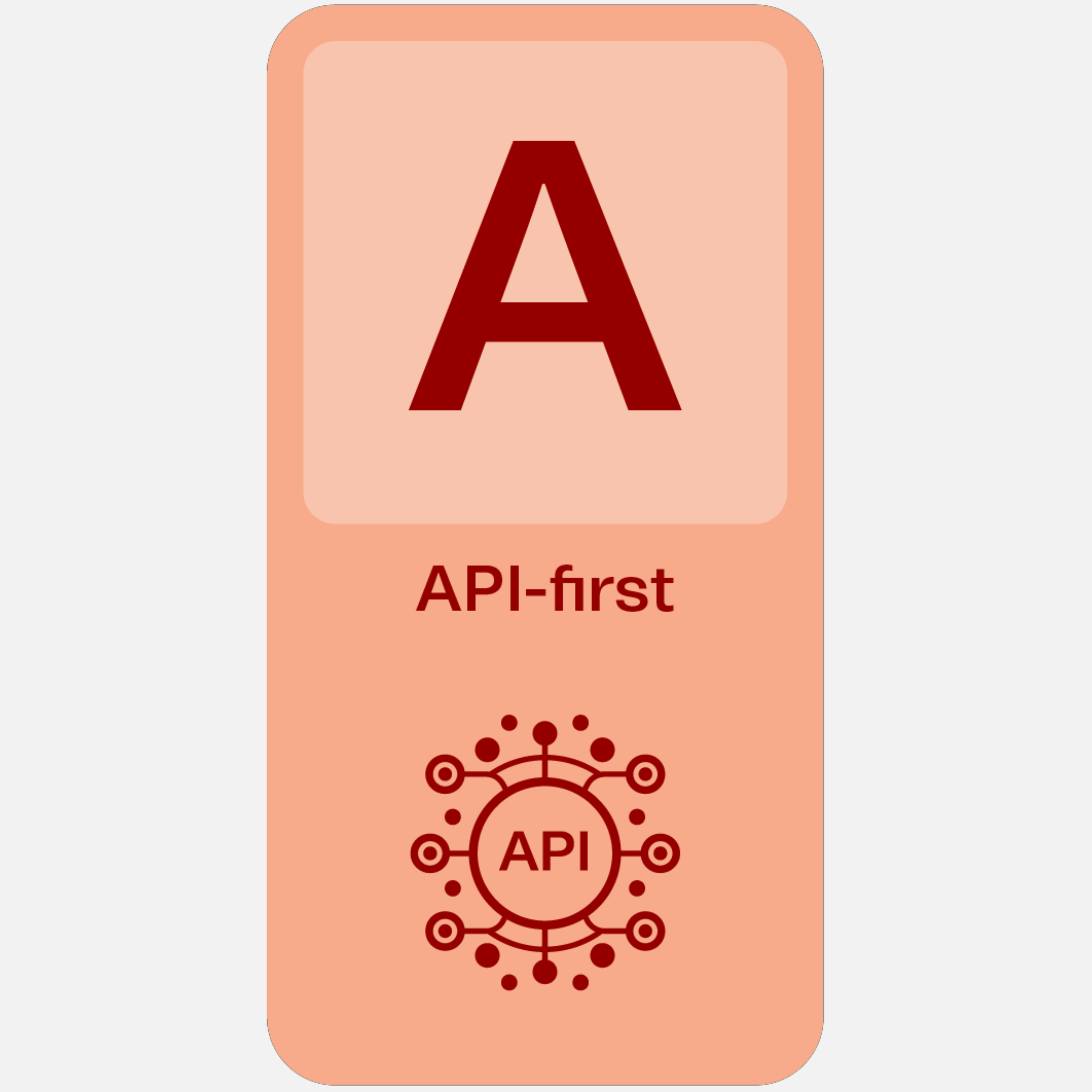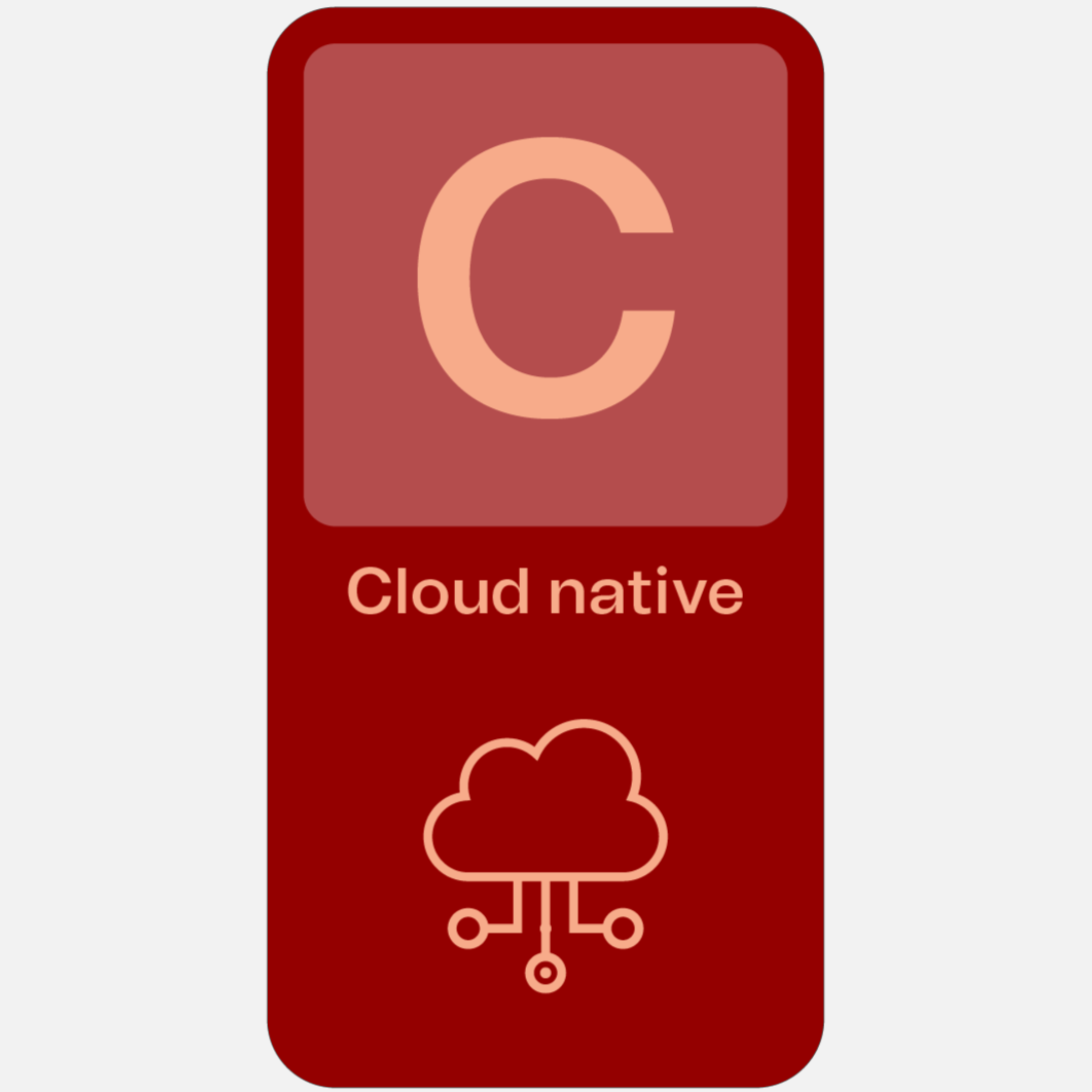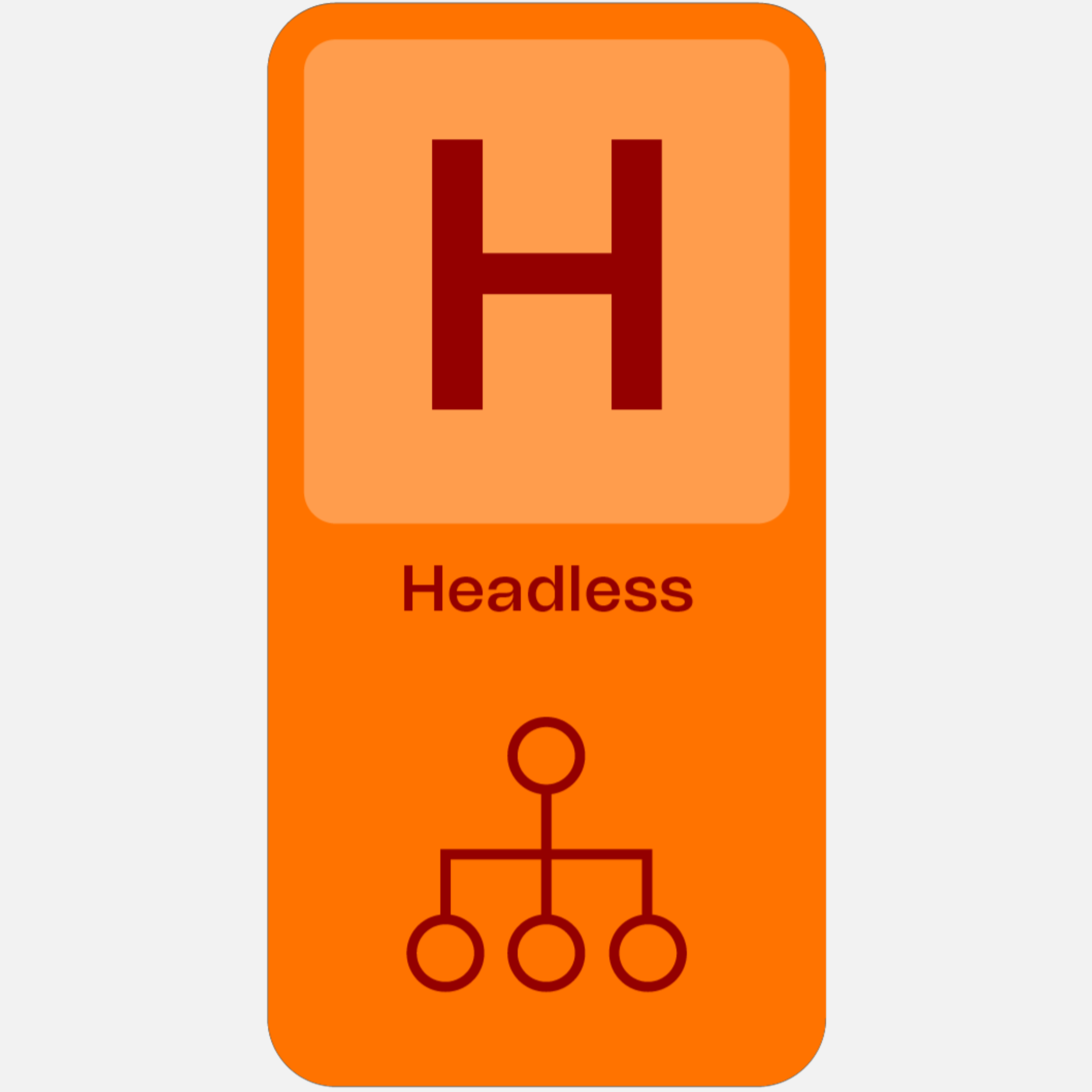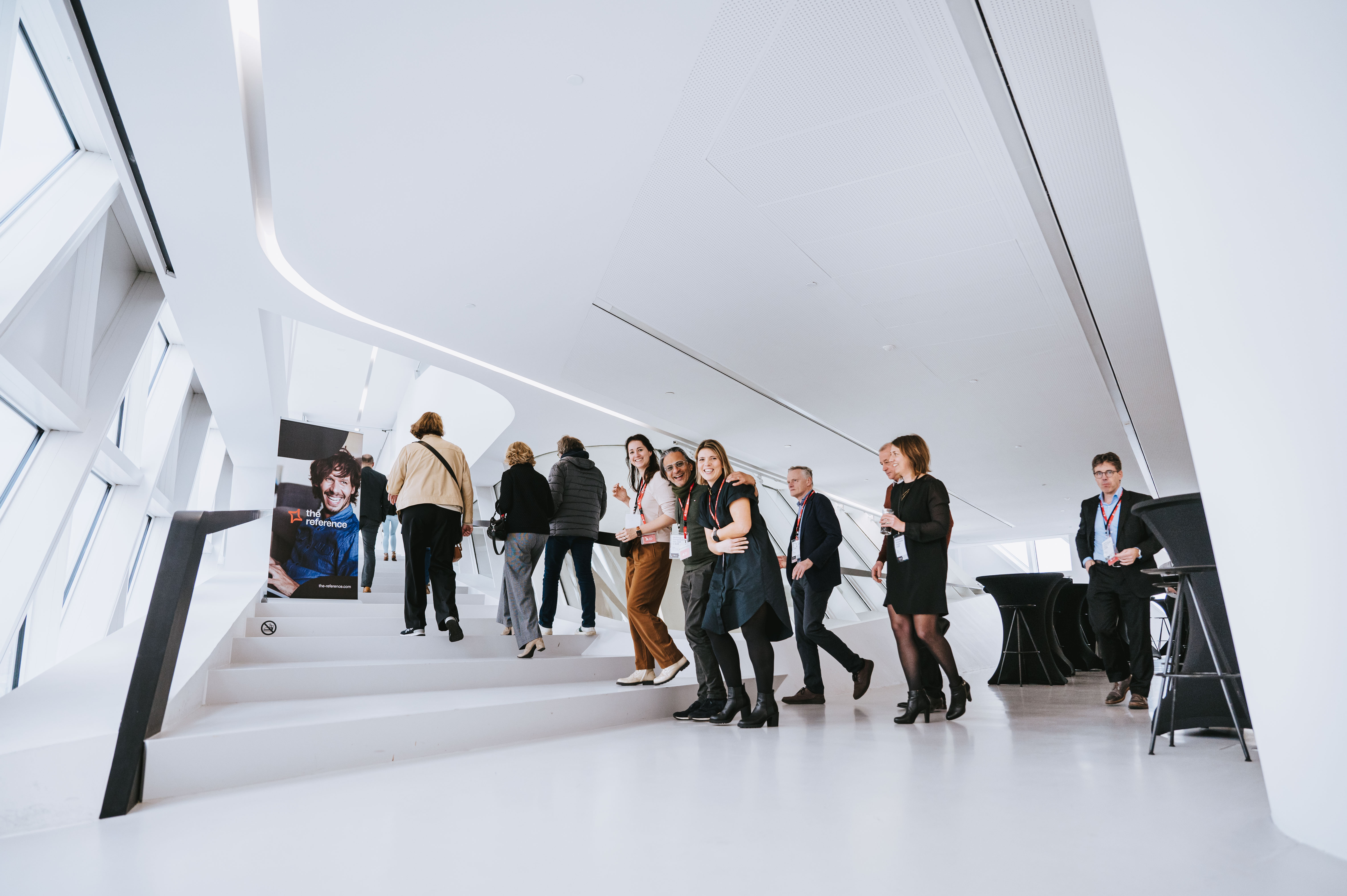By now, you already know that we are a loyal ambassador of composable and more specifically the MACH principle. However, whilst having discussed this topic several times, the question remains...
What the * is MACH?
June 28, 2023 | Fran Wens, Marketing Coordinator
By now, you already know that we are a loyal ambassador of composable and more specifically the MACH principle. However, whilst having discussed this topic several times, the question remains...
What the * is MACH?
Before we continue, it is important to note that the acronym MACH is situated within the bigger picture of a composable architecture.
Composable or 'swappable' architecture allows different compontents to be combined and connected like building blocks. (a little bit lik how you can create various structures using Lego blocks). Furthermore, these different components can be easily connected and disconnected depending on your business needs. This allows you to mix and match the different pieces of the puzzle to create a system that works best for you.
One way of implementing a composable architecture is by leveraging the MACH principle.
MACH will not give you a lot of points in scrabble because of its 4 letters. But the best way to explain it is to start with those 4 letters.
Microservices are individual pieces of digital business functionality that are independently developed, deployed, and managed. They are the pieces of your technology puzzle.
API-first means that all functionality is reachable through an API, making it possible to connect multiple applications or services.
Cloud-native SaaS leverages the full capabilities of the cloud, including computing power, storage, and hosting, in an environment where all resources can be easily scaled and where all upgrades are handled automatically.
Headless means that the front-end user experience and the back-end infrastructure are completely separated.
In an MACH architecture everything needs to be pluggable, replaceable, and scalable. It gives your company the freedom to choose the best tools in the market while maintaining a structure that makes it easy to add, replace, or remove tools as needed.
MACH does not start with technology, it starts with enabling your business to create something for your customers and employees based on a futureproof foundation, as an alternative to monolithic suites.
Characteristic features of the MACH principle are openness and interoperability, built in manageable components. MACH started primarily as a way to design larger web applications, mobile channels, and front-end facing projects. Suddenly, the design teams were no longer restricted by the limitation of the all-in-one platforms, as the headless approach offers a lot more design freedom to craft a fluid experience for each user interface.
Now that you understand what MACH is on a higher level, let us dive into the specific items of this 4-letter acronym and their role within MACH.
Microservices-based means that individual components of business functionality are independently developed, deployed, and managed. These components communicate and exchange data while remaining their separate 'nature'.
For example, you might have separate microservices for catalogue management, order processing, payment handling, search functionality, content management, ...
API (Application Programming Interface) is an essential component that enables communication and integration between the various applications or services. Using APIs, we can tie two or more services together and send only necessary data from one system to another.
In API-first development, APIs are no longer an afterthought but rather a key differentiating factor. Each API is treated as its own individual product, providing flexibility in its design, development, deployment, and maintenance.
Cloud-native SaaS is software that is built and developed for speed and scaled and licensed via a subscription model. So, no need to install and maintain your own servers anymore.
For example Content Management Systems such as Contentful, Kontent.ai, Storyblok, ..., commerceplatforms like commercetools or shopify, Algolia as a search engine and many more.
The role of Headless in MACH
With a headless architecture we separate the front-end and back-end of the system to be able to create personalized UX experiences. This allows for a maximum freedom in designing the user interface and for connecting to other channels and devices.
This combination of Microservices, APIs, and a Cloud-native and Headless approach offers many advantages. Teams can rapidly add new services and integrate extra functionalities, while each development is simple to scale and handles traffic spikes smoothly. Basically, your whole digital ecosystem becomes a fast plug and play environment.
This way, an IT system can be quickly adapted to large growth, without having to be completely redesigned. Additionally, this can also be done in a cost-effective way thanks to the deployment of cloud technologies and without compromising the customer experience. The headless architecture allows to provide a more seamless and personalized customer experience.
On top of that, you can leverage the best in-class technologies for the required capabilities. And if you are no longer satisfied with a technology anymore, simply replace it with another one. It will be up and running before you know it.
Moving into composable business could be an interesting step, to invest in those areas where the difference is made. An e-commerce player with a larger commercial part and a limited content part would be able to shift more smoothly to a commerce engine with more functionalities linked to a small-scale content management system. Or vice versa.
Another example: for larger international companies, it could be an opportunity to separate the ordering process from payment. This decoupling would make it easier to alter a specific business process without changing the entire digital landscape. This allows adapting more swiftly to the needs of different BUs or brands, even supporting geographical expansions.
Did you like what you read? Do you think your business can benefit from a MACH approach? Feel free to reach out, we would love to help you face your digital challenges.
Port of Antwerp-Bruges and Atlas Copco demonstrate the power of MACH in B2B at an exclusive event organized by The Reference together with commercetools.
DPG Media was looking for a partner to create a new central website that prioritizes user experience, brand awareness, and employer branding.
To fully leverage the advantages of MACH, you might want to focus on what is built between the tools that fit in a composable architecture, rather than the tools themselves. Specifally in digital marketing where you need to be able to switch tooling swiftly.
